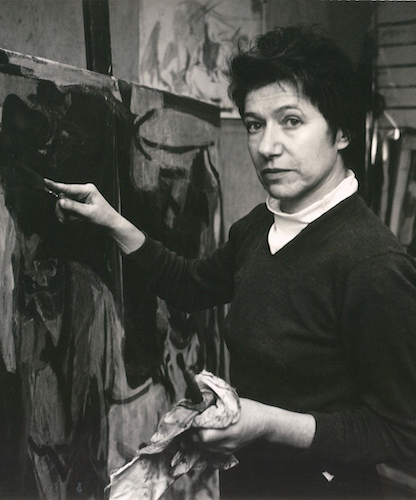
32 page exhibition catalog available:
Order Catalog Here

From Tom McCormick:
Twenty years ago I had an opportunity to buy a couple of paintings by Janice Biala (1903-2000), an artist I greatly admired. I sold those works and have imagined doing a show since that time. Good things come to those who wait and last year Jason Andrew, who manages her estate, contacted me about doing an exhibition of her works from the 1950s and early '60s. I didn't even play hard to get. This was supposed to have happened last spring but got waylaid by the plague, so here we are in November and rarin' to go.
An important figure of historic scale, the painter known simply as Biala had a career that stretched over eight decades and was heralded from Paris to New York. On view are paintings defined by a decade where the artist expanded upon her established style inspired by School of Paris painters like Bonnard, Matisse and Braque, and broadened by the community of loft-living artists in downtown New York that included Willem de Kooning. Critic Michael Brenson aptly described her as “a blend of intimacy and exile.”
Janice Biala was born Schenehaia Tworkovsky in 1903 in a small village tucked alongside the River Biala in what is now southeast Poland. She immigrated to New York with her older brother Yakov in 1913. Yakov would later become the painter Jack Tworkov, a founding member of the New York School.
In the early 1920s, Biala hitchhiked her way to Provincetown, MA, to study with the painter Edwin Dickinson. As she established herself in New York, she changed her name at the suggestion of William Zorach from Janice Tworkov to simply Biala. On a fateful trip to Paris in 1930, she met and fell in love with the English Novelist Ford Madox Ford. Through Ford, Biala became enmeshed with many of the artists forging a new Modernism including the sculptor Constantin Brancusi, the painter Henri Matisse, and writer Gertude Stein. Biala began exhibiting her work in Paris as early as 1938 making her one of the earliest Americans in Paris. Upon Ford’s death in 1939, Biala returned to New York and established herself among a rising generation of artists defining themselves as the New York School.
“Biala chose subject matter over brute expression,” writes Jason Andrew, curator and director of the Estate of Janice Biala, in his essay accompanying the exhibition, “Her paintings derive from the time-honored triumvirate of still-life, landscape, and portraiture, and yet she approached these themes through an uncommon significance defined by a painterliness of gesture, color, and calculated rhythm.”
The exhibition features signature examples of Biala’s unique assimilation of the color and compositions defined by the School of Paris with the gestural expressionism associated with Abstract Expressionism. Many works are on view for the first time.
The work of Biala can be found in major museums world-wide including: The Art Institute of Chicago; The Carnegie Art Museum, Pittsburgh; Kemper Museum of Contemporary Art, Kansas City; Mint Museum of Art, Charlotte; Phillips Collection, Washington, D.C.; Princeton University Museum, Princeton; Smithsonian American Art Museum, Washington D.C.; and The Whitney Museum of American Art, New York among others. In Europe, her work can be found at Museé de Grenoble, Musée National d'Arts Moderne, Centre Pompidou, Paris, among others.
The exhibition is presented in collaboration with the Estate of Janice Biala, New York, and is accompanied by a fully illustrated catalogue with essay by Jason Andrew



